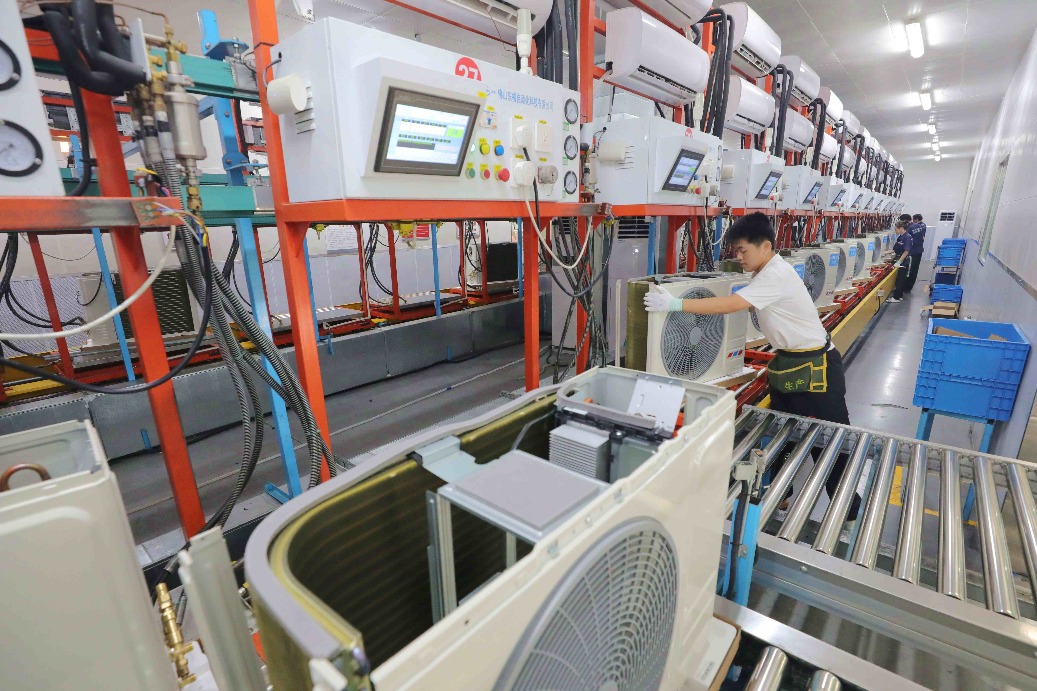Second economic transformation calls for greater domestic consumption


China has successfully transformed from a major agricultural country into the world's top manufacturer through reform and opening-up, and has become the world's second-largest economy.
However, the country is in urgent need of a second economic transformation, given its rapidly aging population and bottlenecks in a growth model driven by exports and real estate.
China's transition to high-quality growth will require an economic rebalancing of its previous growth pattern — from heavy reliance on investment, exports and property toward domestic consumption, advanced manufacturing and the digital economy.
Compared to its global peers, the contribution of investment to China's GDP has been about twice the global average from 2008. The contribution rate has remained at around 42 percent while the global average has only been about 21 percent for the same period.
However, as the return on investment declines, greater investment means more debt. Investments are mainly channeled to sectors such as manufacturing, real estate and infrastructure.
Investment into China's real estate development, for example, shrunk by nearly 10 percent year-on-year in 2022, and is expected to post negative growth this year. Even though the fall in the property sector could narrow, the upward trend of the long real estate cycle of more than 20 years has come to an end.
Further, the overall return on infrastructure investment, which acts as a countercyclical policy tool to stabilize investment, is dropping on a sustained basis, as evidenced by the fact that the median return on invested capital of local government financing vehicles has dropped from 3.1 percent in 2011 to 1.3 percent in 2020.
As the prospect of exports and real estate has a direct bearing on the growth of manufacturing investment, it is no surprise that manufacturing investment will experience a long-term downward trend.
Exports face pressure
Exports have also faced mounting pressure due to stagnant external demand, rising trade frictions and increasing domestic labor costs.
Since 1990, China's exports have continued to grow, and the country has long been the world's top exporter. China's exports accounted for more than 15 percent of the global total in 2021, but a falling trend emerged since the second half of 2022 and continues to unfold.
Japan's share of global exports, after reaching 9.55 percent in 1993, began to go downhill, accounting for less than 3 percent in 2022. The decline of Japanese exports was not caused by the significant appreciation of the yen after the Plaza Accord in 1985 but by the dramatic rise in Japanese labor costs starting in the late 1980s.
Lessons from Japan show that it is almost impossible for a country to sustain a booming export share permanently. A rise of economies is accompanied by increasing labor costs, which will undermine exports' cost advantage.
As China's manufacturing labor costs are now over four times that of Vietnam and over three times that of Thailand, it is difficult to stop enterprises from moving low-end production lines out of China.
Besides the two aforementioned factors, the fast-growing aging population in China has fueled an urgency to push forward its second economic transformation. China entered a period of negative population growth in 2022, and its population is aging faster than that of developed countries.
China has encountered a challenge similar to that of Japan and the Republic of Korea with their population aging at a rapid pace, and is estimated to become a super-aged country by 2030. This means that the potential growth rate of China's economy may decline as a result. Researches show that Japan's average annual GDP growth rate was only 1.26 percent during its rapidly aging population period.
From 2012 till now, the workforce in China has decreased by more than 30 million. The number of retirees will surge significantly from 2022 to 2035 as people born during the second baby boom will be past retirement age. Such changes are partly attributable to China's downward economic trend.




































